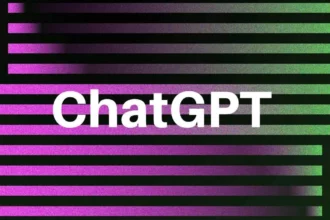Table of Contents
ToggleUsing ChatGPT to Interpret Legal Documents
ChatGPT serves as an efficient assistant in interpreting legal documents by summarizing, drafting, and simplifying legal texts, while always requiring expert review before use. It supports legal professionals by transforming complex documents into accessible information but is not a replacement for qualified legal advice.
Role and Capabilities of ChatGPT in Legal Document Interpretation
ChatGPT acts like a junior associate, aiding with initial research, drafting, and analysis. It can:
- Generate first drafts of contracts, pleadings, and letters
- Summarize lengthy contracts and depositions, highlighting key provisions
- Customize templates to fit specific client needs
- Translate complex legal language into plain terms for clients
- Assist with preliminary legal research and brainstorming
Despite these abilities, all outputs must be carefully verified to avoid errors, omitted details, or outdated information.
Practical Applications in Legal Document Interpretation
1. Drafting Initial Documents
Legal professionals use ChatGPT to draft initial contracts, cease and desist letters, or memos quickly. Providing clear prompts ensures the output includes standard elements with placeholders for specifics. For example, asking ChatGPT to draft a basic NDA creates a solid base to refine.
2. Summarization and Analysis
ChatGPT reads lengthy documents and produces summaries segmented by topics such as termination clauses or intellectual property rights. This speeds up understanding without reading every detail.
3. Template Adaptation
Instead of manual edits, ChatGPT assists in tailoring standard agreements, such as LLC operating agreements, to the needs of startups, emphasizing clauses on intellectual property and exit strategies.
4. Clarifying Legal Concepts
ChatGPT simplifies jargon and generates client-friendly explanations of case developments or common legal processes, increasing client understanding and engagement.
5. Legal Research Aid
While not a primary research tool, ChatGPT helps provide overviews, suggest arguments, and introduce unfamiliar legal topics. It encourages further in-depth research.
Effective Prompting Techniques for Better Interpretation
- Role-based prompts: Asking ChatGPT to act as opposing counsel or a client helps reveal different perspectives on legal documents.
- Breaking complex tasks: Dividing analysis into focused questions improves clarity, such as examining enforceability of a non-compete clause under specific laws.
- Structured outputs: Requesting memos with sections like “Summary of Facts” and “Recommendations” creates organized, professional results.
- Iterative refinement: Starting broad then narrowing focus boosts accuracy—e.g., drafting an email then refining for conciseness and adding timelines.
Clear instructions and context, such as jurisdiction and key legal issues, improve ChatGPT’s relevance and precision.
Ethical, Accuracy, and Confidentiality Considerations
Limitations and Risks
- Hallucinations: ChatGPT can invent false case citations or legal principles, risking sanctions if unchecked.
- Inaccuracy: Mixing jurisdictions or providing outdated law is possible.
- Bias: AI can reflect biases present in its training data, potentially affecting fairness.
Confidentiality Safeguards
- Anonymize client details before input.
- Use hypothetical cases rather than actual clients’ facts.
- Implement internal policies defining appropriate AI use.
Professional Responsibility
Lawyers must review and verify all AI-generated content carefully. Outputs are tools for drafting and brainstorming, not final legal documents.
Implementing Safe and Effective Use in Law Firms
| Safeguard | Measures |
|---|---|
| Document Review | Set procedures to verify AI outputs; keep detailed records and multi-level reviews |
| Client Communication | Inform clients about AI use; manage expectations; explain verification steps |
| Training and Policies | Provide ongoing AI training; develop clear usage guidelines; establish escalation protocols |
Benefits and Industry Adoption
- ChatGPT improves efficiency by automating drafting and summarizing, reducing time spent on routine tasks.
- It democratizes access to legal knowledge and helps smaller firms conduct research cost-effectively.
- Approximately 24% of law firms have integrated generative AI tools into practice, reflecting growing acceptance.
- Concerns remain about ethics and trust, emphasizing the need for education and cautious use.
Best Practices Summary
- Craft specific, structured prompts with clear roles and context.
- Avoid inputting confidential or sensitive data.
- Break complex tasks into simpler parts for clarity.
- Request citations and verify against authoritative sources.
- Review and customize ChatGPT outputs before any client use.
Key Takeaways
- ChatGPT supports legal document interpretation by drafting, summarizing, and clarifying complex texts.
- It cannot replace experienced legal professionals; verification is essential.
- Effective prompting enhances output accuracy and relevance.
- Confidentiality and ethical issues demand careful handling of client information.
- Integrating ChatGPT with safeguards improves legal practice efficiency and access to knowledge.
Discover our product : Legaly IA — AI Based Legal Search Engine
ChatGPT to Interpret Legal Documents: A Fresh Legal Ally in Practice
If you’re wondering, “Can ChatGPT effectively interpret legal documents?” the short answer is yes — but with important caveats. ChatGPT shines as a tireless junior associate who drafts, summarizes, and clarifies legal content upfront, making lawyers’ work faster and smarter. Yet, it’s not the final authority on legal advice; instead, it’s the ultimate brainstorming partner, offering solid first drafts and clear explanations ripe for your expert refinement.
Let’s unpack why this AI marvel is turning heads in legal circles, how it fits into daily workflows, and what safeguards every legal professional must keep in mind.
A Digital Junior Associate: ChatGPT’s Role in Legal Practice
Imagine having an eager new team member who can churn out contract drafts, summarize dense case files, or explain intimidating legal jargon with an almost human touch. That’s ChatGPT in the legal arena. Though it’s not a substitute for seasoned judgment, this AI tool can handle groundwork that’s often tedious and time-consuming for lawyers.
Its knack for natural language processing means it can break down legalese into digestible content. That’s a win for clients, who suddenly find their complex cases less mysterious—making informed decisions easier and building trust in the process.
From Blank Page to Legal Draft: How ChatGPT Simplifies Document Creation
Drafting routine legal documents often feels like reinventing the wheel. ChatGPT accelerates this by generating initial versions of contracts, cease and desist letters, NDAs, pleadings, and memos based on clear, detailed prompts.
For example, asking ChatGPT to “Draft a cease and desist letter regarding trademark infringement in the software industry with placeholders” can get a fully-structured draft in seconds. It’s then up to the lawyer to tailor the nuances—precisely where professional judgment takes center stage.
This approach saves valuable hours, letting lawyers spend their energy on strategic thinking rather than typing every line of boilerplate. Firms adopting AI find they can increase output without compromising quality—provided they review every word.
Complex Legal Documents: Summarization and Analysis
Long contracts, deposition transcripts, and dense policies often consume huge chunks of legal time. Enter ChatGPT, which can craft initial summaries highlighting key provisions like termination clauses, non-compete agreements, or intellectual property rights.
Lawyers can prompt it like this: “Analyze this employment contract and summarize termination terms, non-compete clauses, and IP rights, organized by section.” The output? A clear, structured memo that lays the foundation for deeper analysis.
Unfortunately, ChatGPT isn’t perfect at nuance, so its summaries serve as a starting point rather than a final product. Still, it can reduce hours spent skimming, helping lawyers focus on critical decision points.
Tailoring Templates to Client Needs
Why manually tweak an LLC operating agreement for every tech startup client? ChatGPT efficiently customizes standard templates. You might ask it to “Modify this standard LLC operating agreement to include IP protections and exit strategies for three founding members in a tech startup.”
This cuts down repetitive editing, ensuring foundational clauses fit client specifics. Yet, lawyers must validate jurisdictional requirements and tailor the language rigorously. The AI provides scaffolding, not scaffolding you can leave unattended.
Breaking Down Legalese: Helping Clients Understand Their Cases
One of the highest-value uses of ChatGPT lies in translating complex legal jargon into straightforward explanations. Imagine a client who’s baffled by terms in a contract. Instead of hours drafting an FAQ, lawyers can ask ChatGPT to generate plain language summaries or client-friendly materials, boosting transparency and client confidence.
Clear communication is key in legal representation. AI tools like ChatGPT foster better client relationships by making law less mysterious, empowering clients to engage deeply with their legal matters.
Research Sidekick: Initial Legal Exploration
Legal research can resemble trench warfare—lots of digging, filtering information, and digging again. ChatGPT works best as a reconnaissance agent: quick sketches on unfamiliar legal fields, potential strategies, and pointing to key themes.
For instance, a prompt might be: “Outline the main sections of this employment contract, analyze a non-compete clause for enforceability under New York law, then suggest ways to strengthen it while keeping scope reasonable.” Multiple focused prompts like these help lawyers build a comprehensive view without getting bogged down early on.
It’s essential to remember ChatGPT is not a case law database or statutory repository. Verification against primary sources remains the lawyer’s cornerstone responsibility.
Mastering ChatGPT Prompts: The Art of Getting Useful Results
Effective use of ChatGPT depends heavily on how you prompt it. Role-based prompting is a game changer: assign ChatGPT a vantage point, such as opposing counsel or client perspectives, to generate insights from different angles.
Best practice involves constructing strategic prompt chains instead of broad, complex queries. Break a big task into smaller chunks. For example, first ask for a contract’s main sections, then focus sequentially on specific clauses.
Always provide clear instructions on output format, context, and jurisdiction. This precision helps ChatGPT generate responses closer to legal standards—for instance, including statutory citations in a required format or respecting word limits for court filings.
Starting broad and refining prompts iteratively sharpens responses. For example, “Draft an email explaining the discovery process” can evolve to “Make the email concise and include estimated timelines per step.” This interactive back-and-forth yields more practical drafts.
Ethical and Practical Boundaries: The Limits Every Lawyer Must Know
Here’s the kicker: ChatGPT can hallucinate. It generates plausible but fictional case citations, laws, or legal principles. In 2023, two attorneys got sanctioned for submitting AI-fabricated cases in court documents. This cautionary tale underscores the need for rigorous human verification.
Accuracy isn’t guaranteed. AI may mishandle jurisdictional nuances, deliver outdated information, or mix legal concepts incorrectly. Client confidentiality is also at risk since inputs go to third-party servers for AI model training—an Achilles’ heel in protecting sensitive case details.
Legal professionals must anonymize data, strip identifying info, use hypothetical scenarios, and establish strict internal protocols for AI use. These safeguards protect client privilege and minimize risks of ethical breaches.
Bias is an even thornier issue. AI mirrors historical data and legal bias, potentially perpetuating systemic inequalities. Awareness and proactive mitigation strategies are essential.
Building a Responsible AI Workflow in Law Firms
Successful AI integration in legal workflows hinges on clear frameworks including:
- Document Review Protocols: Multi-level human checks, detailed records of AI-assisted tasks, and mandatory verification procedures.
- Transparent Client Communication: Inform clients about AI usage and set realistic expectations about what tools can and cannot do.
- Firm Training & Guidelines: Educate staff on AI’s limitations, confidentiality needs, and escalation paths for errors.
Balancing cutting-edge innovation with prudence keeps practice efficient yet ethical.
Beyond Document Interpretation: Expanding ChatGPT’s Legal Use
ChatGPT’s talents extend to legal marketing and content creation. Firms use it to craft blog posts, social media updates, newsletters, and even client success stories (anonymized, of course). Consistent, informative content elevates brand presence without monopolizing lawyer time.
For example, a family law practice might request a three-month content calendar focused on divorce mediation and custody topics. ChatGPT can instantly map out engaging themes that resonate with clients.
Legal Industry Adoption and the Road Ahead
According to the 2024 Legal Industry Report, nearly 24% of firms now use legal-grade generative AI tools. Those who hesitate cite ethical uncertainties, a need for more AI literacy, or distrust of AI accuracy. But the undeniable draw remains: automating routine tasks lets lawyers focus on strategy and client advocacy.
As AI tools mature and safeguards solidify, expect adoption to spike. Those who learn to integrate AI thoughtfully stand to lead the profession into a smarter, more accessible future.
Helpful Resources for Legal Professionals Diving Into AI
- DataCamp’s AI Ethics course offers a primer on managing AI bias and ethical quandaries.
- ChatGPT Fundamentals tracks teach effective prompt engineering tailored for law.
- Webinars on data privacy and generative AI shed light on emerging regulatory landscapes.
- PDF.ai simplifies first steps by analyzing complex PDFs, enabling easier ChatGPT use.
Continuous learning is vital as the AI toolset evolves rapidly.
Final Thoughts
ChatGPT is a powerful assistant that can revolutionize how legal professionals interpret and draft documents, conduct research, and communicate with clients. It alleviates laborious tasks, improves clarity, and enhances productivity—if used wisely and ethically.
However, human oversight remains paramount. Think of ChatGPT not as your legal oracle but a highly capable apprentice whose first drafts and insights require your mastery to transform into polished, authoritative work.
Navigating this partnership successfully demands mastering the art of prompting, safeguarding client confidentiality, verifying outputs scrupulously, and embedding AI within responsible workflows. This balance of innovation and professional responsibility defines the future of legal practice.
Ready to make ChatGPT your trusted digital co-counsel? Start small, build prompts thoughtfully, and watch it serve as your clever junior associate—ever ready with a draft or summary, but always awaiting your expert sign-off.
1. How can ChatGPT assist in interpreting complex legal documents?
ChatGPT can summarize lengthy contracts, highlight key provisions like termination or non-compete clauses, and explain complicated terms in plain language. It helps legal professionals grasp critical points faster.
2. What are effective prompting strategies when using ChatGPT for legal document review?
Use role-based prompts such as asking ChatGPT to act as opposing counsel or a client. Break complex tasks into focused steps and specify structure, jurisdiction, and key issues for more precise outputs.
3. What limitations should legal professionals keep in mind when relying on ChatGPT?
ChatGPT may produce inaccurate or fabricated case citations and outdated legal info. Outputs require careful verification, as the AI can hallucinate or confuse jurisdiction rules. Professional review is essential.
4. How can confidentiality be maintained while using ChatGPT on sensitive legal documents?
Remove all identifying details, anonymize case information, and use hypothetical scenarios. Establish internal policies for AI use to prevent disclosure of client data or breaches of attorney-client privilege.
5. Can ChatGPT replace a lawyer’s legal judgment when interpreting documents?
No. ChatGPT serves as an assistant that drafts and summarizes but cannot replace professional legal judgment. Its output must always be reviewed and refined by qualified legal experts before use.




